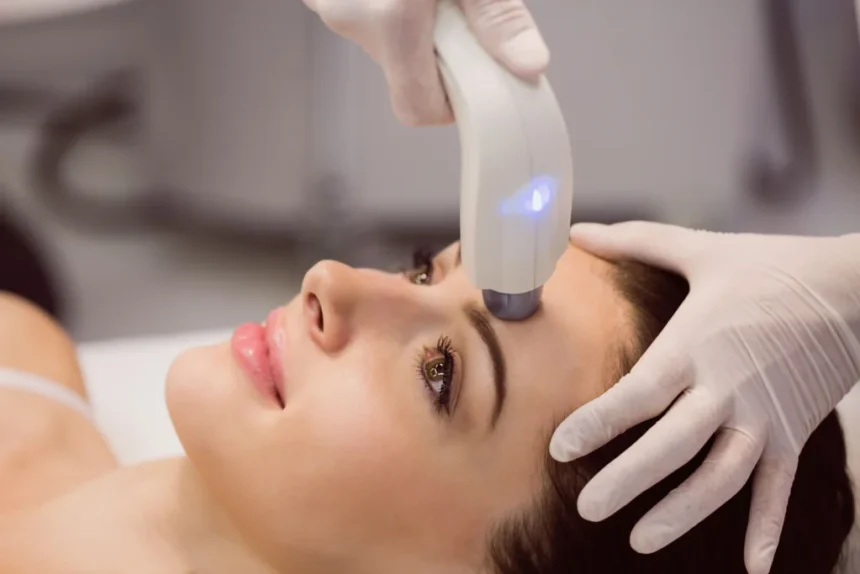Skin laser treatment works by directing concentrated light beams at specific targets in the skin, such as pigment or water. The light produces heat, which can trigger different responses within the skin’s layers. Here are some of the primary categories of laser treatments and what they are designed to address:
Ablative Lasers
Ablative laser treatments work by removing the thin, outer layer of skin, known as the epidermis. This process also heats the underlying skin, or dermis, which stimulates the growth of new collagen fibers. As the treated area heals, the new skin that forms may appear smoother and tighter.
Ablative lasers may be more intense. With this option, the healing process typically takes longer compared to nonablative treatments. Following post-procedure care instructions is a key part of the recovery phase.
Nonablative Lasers
Nonablative lasers operate differently. Instead of removing the outer layer of skin, these lasers work beneath the surface without harming the top layer. The laser’s energy stimulates collagen growth in the dermis, which over time may help improve skin tone and texture. This approach is less invasive than ablative treatments.
Pulsed-dye lasers are a type of nonablative laser. They work by heating the skin and absorbing pigments to reduce redness, hyperpigmentation, and broken capillaries. Another type is fractional lasers, which deliver heat into the skin through thousands of tiny, deep columns.
This method treats only a fraction of the skin at a time and leaves the surrounding tissue intact to speed up the healing process. Because these treatments are gentler, patients may need multiple sessions to achieve the desired outcome. Patients exploring laser treatments should consult a qualified dermatologist to determine the best approach for their specific skin concerns and goals.
Unwanted Spider Veins
Laser treatments serve as a standard method to address spider veins, which are small, dilated blood vessels visible near the surface of the skin. During the procedure, practitioners direct laser light at the vein. The blood’s pigment absorbs this light and converts it into heat. This heat damages the blood vessel walls, causing them to collapse and seal shut. Once the walls collapse, the body gradually absorbs the vein, and blood reroutes to healthier veins deeper below the skin’s surface. Typically, the vein’s appearance fades over several weeks.
Reduced Lines and Wrinkles
Both ablative and nonablative lasers are used to address lines and wrinkles. Ablative lasers remove the outer skin layer and promote collagen remodeling in the dermis, leading to a smoother surface as the skin heals. Nonablative lasers also work by stimulating collagen production, but they do so without removing any skin. This skin laser treatment helps to plump the skin from within, gradually reducing the appearance of fine lines. The choice between these two approaches depends on the specific characteristics of the wrinkles and the individual’s skin type and goals.
Schedule Skin Laser Treatment
Understanding the fundamentals of different laser treatments is the first step in exploring your options. Each type of laser is designed for a specific purpose and interacts with the skin uniquely. If you are interested in learning more about which treatment might be suitable for you, the next step is to talk with a qualified professional. Contact a family medicine clinic to schedule a consultation with a specialist.









